Trypanosomiasis in horses or surra, caused by Trypanosoma evansi, is one of the essential haemoprotozoan infections. It infects camels, horses, donkeys, mules, cattle, buffaloes, sheep, goats, pigs, dogs, elephants, dear, tigers, foxes, and jackals.
Importance of Equine Trypanosomiasis
Trypanosomiasis is a common protozoal disease of horses, mules, and donkeys. The disease is caused by an extra-erythrocytic blood protozoan, Trypanosoma evansi. The disease mainly causes anemia and blood loss due to the destruction of erythrocytes. The article will discuss various essential points on equine trypanosomiasis.

Transmission of Trypanosomiasis in Horses
T. evansi is transmitted mechanically by biting flies, particularly of the genus Tabanus. Transmission occurs only when the feeding is interrupted. There is no development of the trypanosome in the Tabanus. The successful transmission can occur if the transference of the parasite takes place within a few minutes after the bite, and the chances are great that it occurs almost instantly. Lyperosia, Stomoxys, and Haematopota can also transmit the disease.

Typically, the life cycle also involves a blood-sucking arthropod in which meta-cycle development takes place. After initial multiplication, development to the epimastigote stage, where the kinetoplast is anterior to the nucleus, takes place at various sites in the arthropod gut.
The feeding activities of biting flies that visit two or more animals in quick succession, e.g., tabanids, can lead to the mechanical transmission of trypomastigotes into a susceptible vertebrate host without the intervening metacyclic development. Some species, e.g., the T. equiperdum, has dispensed with arthropod vectors altogether and are transmitted by physical contact during coitus.
Epidemiology of Equine Trypanosomiasis
The incidence and the severity of the disease vary in different localities according to the strain of T. evansi. In various countries, an increase in surra has been associated with monsoon months, reaching the climax in October and November when the fly breeding is highest. The incidence is lowest in April and May when water resources have dried up and fly breeding is significantly reduced.
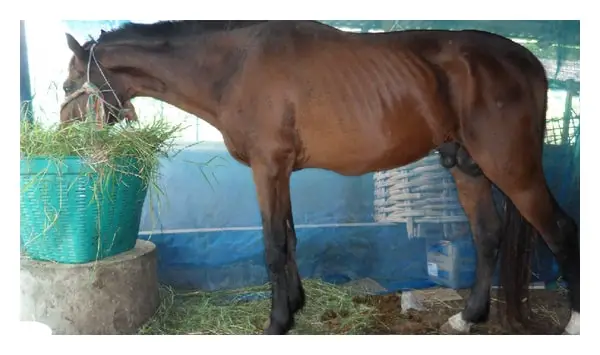
Pathogenesis of Trypanosomiasis in Horses
Period of incubation is variable and depends upon the intensity of infection and the species and health of the animal; symptoms usually appear 1-2 weeks after infection-
Pyrexia Stage
Corresponding to the appearance of large numbers of trypanosomes in the peripheral blood, the body temperature is raised by 4 C to 5 C above average. The animal is dull, depressed, and shows irregular appetite. Depending upon the animal species, the pyrexial stage may continue from 2 days to 3 weeks. Then temperature returns to normal, and the animal usually starts feeding. However, it continues to develop weakness and shows loss of condition. During this period, the trypanosomes disappear from the peripheral blood to appear again in the subsequent pyrexial paroxysm. Intermittent fever is characteristic of T. evansi infections in animals.
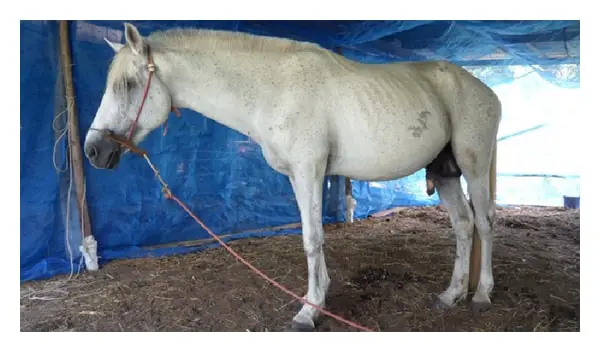
Anemic Stage
The most noticeable pathological change is progressive anemia; erythrocytes are reduced to 25 percent of the standard value, and hemoglobin concentration falls. Whether the severe anemia is due to the destruction of red cells or inhibition in their production is unknown, but it is presumably due to severe anemia; edema develops on the dependent parts of the body. Edema is conspicuous in the scrotal region, on the sheath of the penis, the fetlock and pastern joints, urticaria, loss of hair, conjunctivitis, and petechial hemorrhages under the membrane nictitans are joint in horses and camels.

Nervous Stage
The nervous stage is not a common feature of T. evansi infection in animals, and it may be exhibited in some instances. During this stage, the animals show great weakness in the lumbar region, incoordination of muscular movements, staggering gait, paralysis of the hindquarters, prostration, inability to feed and drink, and finally, death. Although most animals die of exhaustion and severe anemia in the anemia stage, symptoms of the nervous disorder have been observed in horses in the last stage of the disease.

Causes of Death Due To Sura
Trypanosomes consume a large quantity of blood sugar resulting in the breakdown of the liver function and the resultant hypoglycemia and fatal intoxication.
There is an elevation in lactic acid production in the blood, which interferes with the hemoglobin’s normal absorption of oxygen, resulting in asphyxiation. Mechanical blocking of the lung capillaries, pulmonary edema by the obstruction of the capillaries by agglutinated trypanosomes all result in asphyxiation with fatal termination.
Trypanosomes liberate toxins or proteolytic enzymes, resulting in toxins’ formation for severe anemia and death.
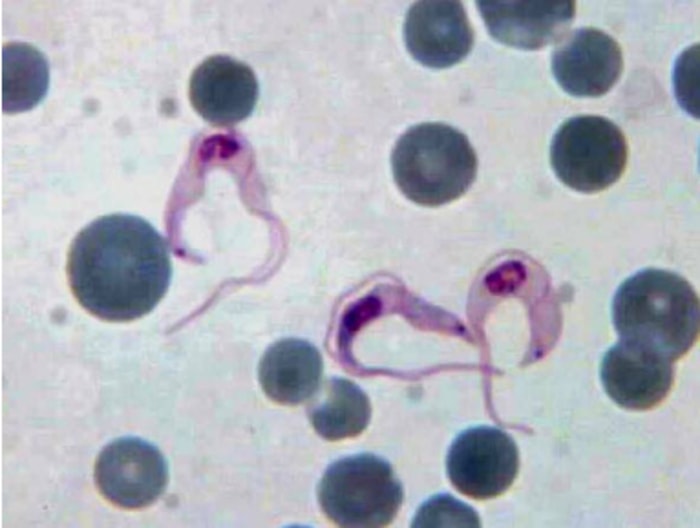
Clinical Signs of Trypanosomiasis in Horses
A prominent feature of trypanosomiasis is the relapsing nature of the disease. Each remission marks a successful reduction in parasites numbers by host immunity. The disease recurrences correspond with the period of increasing parasitemia which occurs when the trypanosome population circumvents the previous immune response. This the parasite can do by periodically expressing surface-coat glycoproteins of a differing antigenic nature. This phenomenon is known as antigenic variation. Multiplication continues until the host mobilizes an immune attack against the new antigenic form. The main symptoms are
- The high rise in temperature.
- Anemia.
- General urticarial eruptions .
- Petechial hemorrhages.
- The mortality is usually 100%.
The disease is characterized by two kinds of periods:
- Paroxysm when the trypanosomes are seen in the blood.
- Intermission, when the flagellates are absent from the blood. Surra in equines invariably proves fatal.
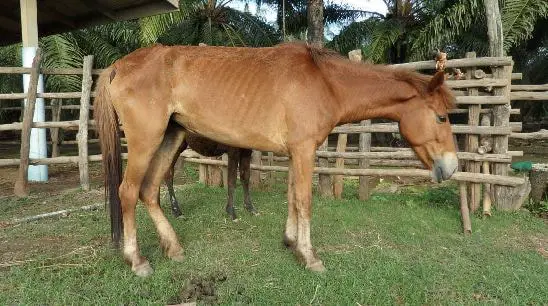
Diagnosis of Equine Trypanosomiasis
Your veterinarian performed the diagnosis, and in pyrexial phases, when the trypanosomes are present in more numbers in the peripheral blood circulation, both the wet film and strained preparations may reveal trypanosomes. Still, detection of light or chronic infection is almost impossible with a microscope.
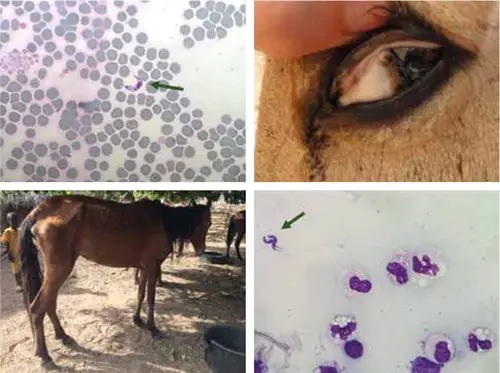
Treatment of Trypanosomiasis in Horses
Your veterinarian prescribed for trypanosomiasis in horses is Qunapyramine sulfate, and it is the latest and most satisfactory remedy. It is a synthetically prepared drug and has been shown to have consistently good results against surra.
The drug is very satisfactory against various trypanosomal infections, including surra. Antrycide methyl sulfate is curative, and Antrycide chloride is a prophylactic salt. The prophylactic properties of the drug are due to its persistence in the subcutaneous region of the site of infection, where the body slowly absorbs it.
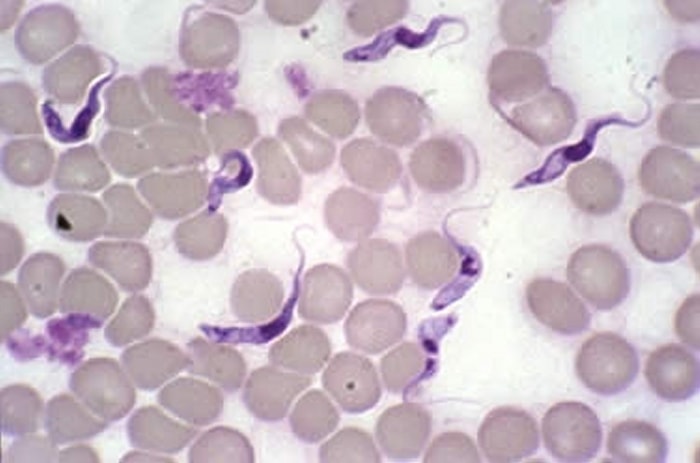
Your experts used various other drugs are different as Diamidines, Phenanthridinium compounds, and Antypol complexes. Diamidines including Pentamidine and Stilbamidine have been used with little success. Berenil has proved helpful in sterilizing infections providing resistance to other drugs. The drug is primarily curative and not prophylactic.
Concluding Remarks on Trypanosomiasis in Equine
Trypanosomiasis is a significant disease of horses where the mortality may reach up to 100%. The disease causes anemia, high body temperature, and bleeding. The horses may be weak progressively and die due to loss of blood. The disease is curable if diagnosed, and treatment starts early.